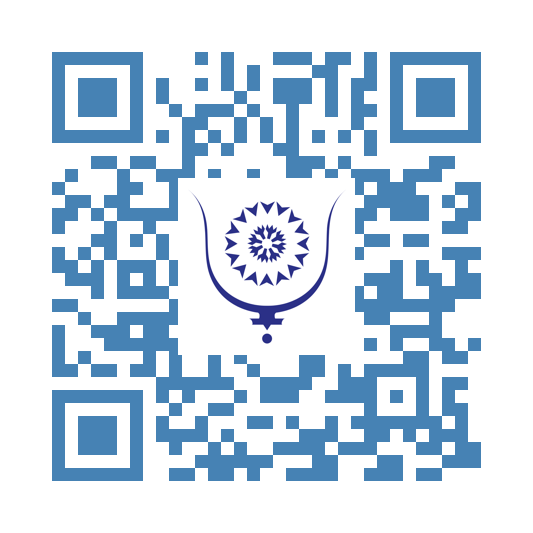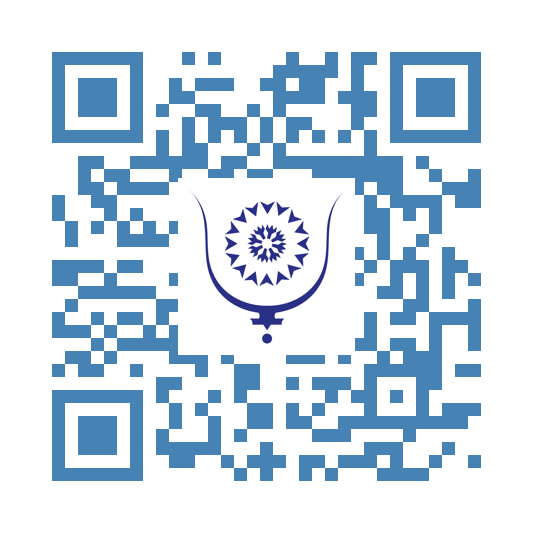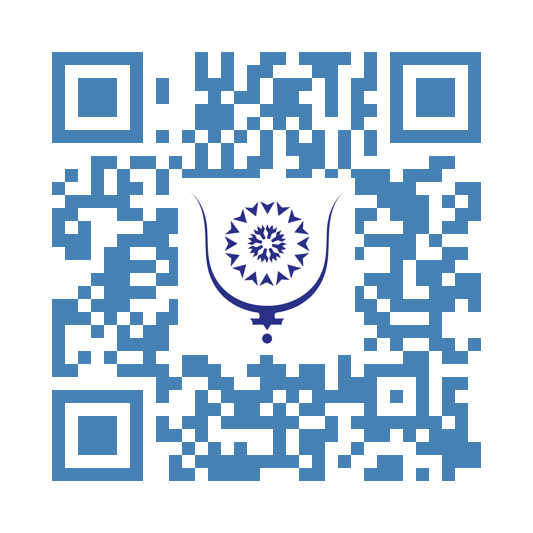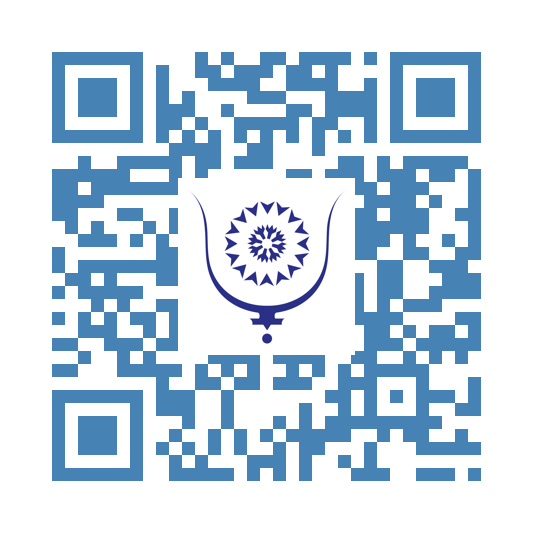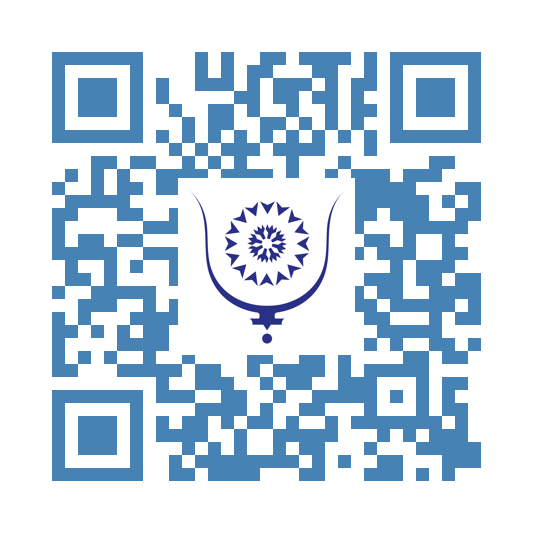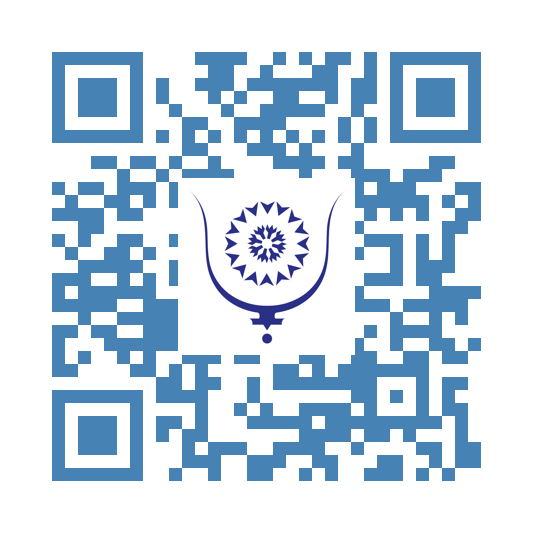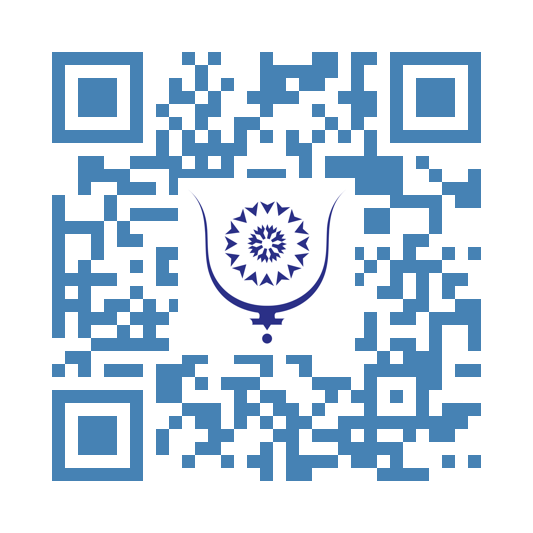
Pensez le Futur.
Technologie
Avec Bluwr, transformez vos textes en articles percutants grâce à un formatage simple et automatique. Découvrez comment sublimer votre contenu.
==Les bases du style==
**Texte en Gras**
Pour mettre du texte en gras, entourez-le de deux astérisques de chaque côté. Par exemple, si vous écrivez deux astérisques, puis le mot "important", puis deux astérisques, il apparaîtra en formatage gras.
;;
astérisque astérisque important astérisque astérisque
;;
*Texte en Italique*
Pour le texte en italique, utilisez des astérisques simples autour de vos mots. Écrivez un astérisque, votre texte, puis un autre astérisque.
;;
astérisque texte astérisque
;;
__Texte Souligné__
Créez du texte souligné en utilisant deux tirets bas avant et après votre texte.
;;
tiret_du_bas tiret_du_bas texte tiret_du_bas tiret_du_bas
;;
==Éléments de Mise en Page==
Créer des Séparations Visuelles
Vous voulez ajouter une ligne horizontale pour séparer les sections ? Tapez simplement quatre tirets d'affilée.
;;
tiret tiret tiret tiret
;;
Centrer Votre Texte
Faites apparaître le texte centré en l'entourant de deux signes égal.
;;
égal égal Ce texte sera centré égal égal
;;
Afficher du Code et des Exemples
Affichez du code ou préservez le formatage exact en entourant le texte de deux points-virgules. C'est parfait pour montrer des exemples ou des extraits de code.
;;
point_virgule point_virgule
Votre code ici
point_virgule point_virgule
;;
==Listes et Organisation==
Puces
Créez des listes à puces en commençant chaque ligne par un tiret et un espace.
;;
- Premier élément
- Deuxième élément
- Troisième élément
;;
Listes Numérotées
Créez des listes numérotées en commençant les lignes par des chiffres et des points.
;;
1. Première étape
2. Deuxième étape
3. Troisième étape
;;
==Ce que Bluwr fait pour vous==
**Paragraphes d'Introduction**
Bluwr stylise automatiquement la première phrase de votre publication comme un paragraphe d'introduction. Écrivez simplement, naturellement et votre introduction sera mise en avant pour attirer les lecteurs.
**Traitement Intelligent**
Toutes ces options de formatage fonctionnent ensemble de manière harmonieuse. Le système traite votre texte en arrière-plan, vous pouvez donc vous concentrer sur l'écriture pendant que Bluwr gère la présentation.
==Nos conseils pour bien commencer==
- **Mélangez différents styles** pour des publications riches et engageantes.
- **N'en faites pas trop** - laissez votre contenu vous demarquer.
- **Utilisez des tirets** pour diviser les paragraphes plus longs.
- **Essayez le texte centré** pour les annonces importantes.
- **Les blocs de code** sont parfaits pour partager des exemples ou préserver un formatage spécifique.
**À vous de jouer !** Testez ces options dans votre prochaine publication. Écrivez naturellement et laissez Bluwr transformer vos mots en contenu captivant.
Une fois ces techniques maîtrisées, elles deviennent naturelles. Vos publications gagnent en impact sans effort supplémentaire.
La cybersécurité marocaine dangereusement mise à mal par des attaques successives. 351
Le Maroc fait face depuis avril 2025 à une série d’attaques informatiques majeures revendiquées par un collectif de hackers supposés algériens nommé «JabaRoot DZ». Ces cyberattaques ont ciblé des institutions économiques et administratives clés, notamment le ministère de l’Emploi, la Caisse nationale de la sécurité sociale (CNSS), tout récemment le ministère de la justice ainsi que des plateformes liées au cadastre et à la conservation foncière.
Ce qui est claire, disons-le de suite, est que l’Algérie n’a aucunement la puissance technologique et de savoir-faire pour ce genre de besognes. Il est fort probable que ses services fassent appel à des « compétences » notamment à l’est de l’Europe pour s’attaquer aux intérêts du Royaume dans sa guerre globale à l’encontre de son «ennemi classique ». Si cette hypothèse se vérifiait, la question serait alors de savoir qui d'autres disposerait des informations piratées et pour quel usage.
La première intrusion, survenue début avril 2025, a débuté par le piratage du site du ministère de l’Emploi et s’est rapidement étendue à la base de données de la CNSS. Cette attaque a conduit à la fuite de milliers de documents sensibles, exposant les informations personnelles de près de deux millions de salariés et les données administratives d’environ 500 000 entreprises marocaines. Parmi les données divulguées figuraient des bulletins de salaire détaillant noms, numéros de sécurité sociale, salaires, et parfois numéros de cartes d’identité de personnalités très importantes et de dirigeants de Royal Air Maroc, d'Attijariwafa Bank, de la Banque centrale populaire, du Fonds Mohammed VI pour l’investissement.
Moins de deux mois plus tard, en juin 2025, JabaRoot DZ a revendiqué une nouvelle cyberattaque « de grande ampleur » contre l’Agence nationale de la conservation foncière, du cadastre et de la cartographie (ANCFCC). Bien que l’ANCFCC ait démenti toute intrusion directe dans ses serveurs, il a été révélé que la faille provenait d’une plateforme électronique utilisée par certains bureaux de notaires pour l’archivage des documents fonciers. Les hackers affirment avoir obtenu environ 4 téraoctets de données, comprenant des millions de titres fonciers, des documents contractuels, des copies de cartes d’identité, de passeports, ainsi que des documents bancaires et des informations concernant de hauts responsables et personnalités publiques. Cette fuite a conduit à la fermeture temporaire de la plateforme par l’ANCFCC pour des raisons de sécurité.
Les hackers justifient ces attaques comme des représailles à des tentatives présumées de piratage marocain contre des institutions algériennes, notamment le compte Twitter de l’Agence de presse algérienne (APS). Ils ont également menacé de nouvelles actions en cas de futures attaques contre les intérêts algériens. Ces événements s’inscrivent dans un contexte de tensions géopolitiques entre le Maroc et l’Algérie, exacerbées par des enjeux liés au développement récents de l'affaire du Sahara et des rivalités régionales; le Maroc depuis quelques temps enregistrant victoire sur victoire à un rythme effréné. L'Algérie, dans ses médias officiels et officieux, ne se cache même plus et va jusqu'à implicitement revendiquer le piratage, ignorant le fait que se soit là une sorte de terrorisme d'état.
Ces cyberattaques ont eu des conséquences graves : elles ont érodé la confiance des citoyens dans les services publics numériques, augmenté les risques d’usurpation d’identité et de fraude bancaire, et porté atteinte à la réputation des entreprises concernées. Le gouvernement marocain a qualifié ces actes de « criminels » et a annoncé des mesures pour renforcer la cybersécurité tout en ouvrant des enquêtes internes.
La série d’attaques met surtout en lumière des vulnérabilités majeures dans la cybersécurité des institutions marocaines. La centralisation massive des données sensibles dans des plateformes uniques et le fait de créer des jonctions entre plusieurs intervenants et plateformes, facilitent les choses pour les citoyens et les institutions dans le cadre de la digitalisation certes mais facilite aussi l’accès massif des hackers en cas de brèche. Il est donc crucial de revoir en profondeur et sans plus tarder la stratégie nationale de protection des données.
Pour mieux répartir ses données et renforcer sa sécurité, le Maroc pourrait adopter plusieurs stratégies complémentaires, en s’appuyant notamment sur la Stratégie nationale de cybersécurité 2030 et les meilleures pratiques internationales. Il devrait sans doute éviter la centralisation excessive en répartissant les données sensibles sur plusieurs systèmes sécurisés, segmenter les réseaux pour limiter les mouvements latéraux des hackers, et utiliser des techniques de transmission des données par plusieurs canaux distincts, afin de réduire les risques de vol simultané.
Le Maroc se doit aussi intégrer des solutions de cybersécurité décentralisée basées sur la blockchain et l’intelligence collective, mettre en place un cloud souverain national avec hébergement local et chiffrement de bout en bout garantissant la protection des informations critiques.
Le pays devrait par ailleurs, développer un cadre juridique agile et adapté, former un vivier national de professionnels qualifiés en cybersécurité via des cursus spécialisés et certifications, et mettre en place un Security Operations Center performant combinant outils de détection avancés et équipes locales capables de gérer les menaces spécifiques au contexte marocain. Une école supérieure de cybersécurité ou encadreraient des étudiants parfaitement sélectionnés, de véritables spécialistes, peut être une avancée stratégique majeure garantissant et la compétence et l’indépendance dans ce domaine.
Face à la montée des cybermenaces, il est urgent que le Maroc adopte une politique de cybersécurité proactive et innovante, reposant sur une architecture technique décentralisée.
Renforcer la coopération régionale et internationale n’est ici pas un luxe. L’échange d’informations critiques en temps réel est crucial; comme il est vital d'encourager la collaboration public-privé via des plateformes d’échange de renseignements sur les menaces, pour anticiper et réagir rapidement aux incidents.
Aujourd’hui force est de constater que nombreux sont ceux qui prétendent maitriser la question, offrant des services qui vont très vite mettre à nu leurs limites et incompétences. Les administrations et les entreprises doivent faire très attention avant de s’engager ou d’engager les compétences dans ce domaine fort sensible.
C'est une sphère qui repose sur une gouvernance agile, sur le développement des compétences humaines et la coopération active au niveau national et international. Une approche intégrée est essentielle pour bâtir un cyberespace résilient, souverain et capable de soutenir la transformation digitale ambitieuse du pays, tout en protégeant efficacement sa sécurité, ses institutions, ses citoyens et son économie.
Peut-on encore faire sans l’intelligence artificielle ? 1406
L’IA est un domaine de recherche en pleine expansion en elle-même, pour elle-même mais c’est également un domaine qui de plus en plus sert de support à l’ensemble des autres domaines scientifiques avec l’ouverture de nouvelles perspectives, d’accélération de la connaissance et de maitrise de nouvelles technologies qui permettent des raccourcis en temps jusqu’ici inimaginables.
L’avenir de l'IA est prometteur certes mais à la condition de la maitrise de l’outil et des caps à maintenir et aussi en réduisant au maximum le fossé qui peut exister entre la compréhension de l’humain, ses intentions et la machinerie qui elle devient de plus en plus autonome et donc a besoin d’humains d’un niveau de connaissance et de maitrise de plus en plus capables de lui faire faire le travail convenablement de manière efficiente et parfaitement bien ciblée, pour l’intérêt de l’humanité.
Il y a lieu également de parfaitement comprendre les disparités et les différences culturelles, génotypiques, géographiques, historiques et autres qui devraient nous amener à ne plus avoir qu’un seul angle de vision mais plutôt à entrevoir les choses en tenant compte justement de ces disparités et différences et ce notamment quand il s’agit de domaine médicaux complexes où le détail est très important.
Le sénégalais, le canadien, le marocain, le finnois, réagissent-ils de la même façon aux thérapeutiques aujourd’hui proposées ? Souffrent-ils des mêmes maladies, réagissent-ils de la même façon, s’ils sont exposés à un même virus ou une même bactérie ?
Les applications de l’IA, qui concernent les humains, permettent et permettront davantage dans un avenir proche, d’améliorer la qualité des soins. Les opérations seront assistées et les médicaments conçus au cas par cas. Toujours est il qu’il faut avoir des données fiables, comme il est impératif de procéder de la manière la plus appropriée et cela la machine ne peut le faire si au préalable ce ne sont pas des humais éclairés qui procèdent à son apprentissage.
Ses humains doivent avoir la connaissance suffisante et adéquate pour développer les approches et techniques qu’il faut mais également être en respect total d'une éthique à toute épreuve.
Dans le lien en bas, Dr Tariq Daouda nous explique cela et plus encore de manière très pédagogique, alors qu’il était l’invité de la rédaction de Médi TV.
Je vous invite à cliquer dessus.
Vous quittez Bluwr.
We cannot guarantee what's on the other side of this link:
Une symphonie de pixels ou de fragments de réalité ... 1268
Dans la pénombre chatoyante de la salle de conférence, enveloppée de lumières bleues et rouges, je me tenais devant une assemblée éclectique de joueurs, prêts à plonger dans le monde de gaming d'une manière différente. Les projecteurs diffusaient des teintes vibrantes, reflétant l'énergie palpitante de cet événement international dédié à l'esport. J'avais fait le choix délibéré de m'immerger dans l'esthétique du jeu, en arborant une présentation qui me liait intimement à cette communauté dynamique.
Les participants s'étaient rassemblés, parés de leurs accessoires distinctifs, portant leurs avatars virtuels et leurs mondes numériques. Leur intérêt était palpable, curieux de voir une approche académique du jeu, offrant un répit bienvenu dans leur vie quotidienne de joueur. Pour eux, cette incursion dans le monde tangible des conférences a été une expérience à part, à la fois amusante et gratifiante.
En tant que scientifique, j'étais confrontée à une question essentielle : devions-nous persister dans notre tradition de transmission d'informations par le biais de conférences traditionnelles, ou devions-nous embrasser et intégrer les espaces communautaires des joueurs ? La réponse est plus complexe qu'il n'y paraît.
D'une part, la tentation était grande de rejoindre des communautés virtuelles, de s'engager directement avec les joueurs dans leurs environnements en ligne, là où ils se sentent le plus à l'aise. Cette approche offrait une proximité instantanée et une interaction sans entrave, mais elle risquait également de diluer la nature formelle et structurée des présentations académiques.
D'un autre côté, il était important de maintenir la valeur et le prestige des conférences traditionnelles, en invitant les joueurs à s'engager dans un espace physique où les idées pouvaient être échangées de manière approfondie et réfléchie. Cette approche a permis une exploration plus nuancée des sujets, en encourageant la pensée critique et la collaboration en face à face.
Au cœur de cette réflexion se trouve la nécessité de trouver un équilibre entre ces deux mondes, de jeter des ponts entre la rigueur académique et la culture du gaming, d'encourager une participation diversifiée et inclusive. Il était peut-être temps d'explorer de nouveaux modes de transmission de l'information, où les conférences traditionnelles pourraient coexister harmonieusement avec les espaces communautaires en ligne, offrant une expérience enrichissante et holistique à tous les participants.
Dans cet espace entre le réel et le virtuel, entre la tradition et l'innovation, j'étais prête à guider cette conversation vers de nouveaux horizons, dans l'espoir de façonner un avenir où la convergence entre le gaming et les connaissances académiques n'est pas seulement possible, mais une source d'inspiration et de croissance pour tous.
Intelligence artificielle, Le Debrief... 1457
l'intelligence artificielle un sujet et une thématique dont se saisissent des spécialistes certes mais pas que, hélas. Beaucoup se saisissent du sujet, s'en accaparent et répandent plein d'inepties du haut de leur ignorance, des fois frôlant le ridicule et l'intolérable.... Beaucoup prennent la parole dans des débats autant incompréhensibles que stériles. Résultats des courses nombreux citoyens et décideurs sont induits en erreurs avec des propos fallacieux limites inacceptables pour l'intelligence humaine normale.
Faut pas être un génie ni un super pro de l'IA pour conclure à l'ignorance de beaucoup de ceux qui prennent la parole, mais tous n'avons pas la possibilité de pénétrer les méandres du sujet et d'en saisir les opportunités fantastiques aujourd'hui offertes à nous...
Le sujet est d'une extrême importance et pour en prendre la mesure et donc en comprendre l'enjeu, les contours et les contenus, c'est à de véritables spécialistes qu'il faut donner la parole et c'est ceux là qu'il faut écouter; Ecouter pour s'instruire et comprendre ce qui est entrain de transformer fondamentalement nos connaissances, notre degrés d'intégration de la science et de la technologie et partant prendre les bonnes décisions politiques qui vont impacter notre devenir en tant qu'individus, société et pays. Notre pays se doit de prendre les mesures adéquates pour ne pas rater le coche et pourquoi pas se positionner comme leader dans le domaine.
Dans son émission hebdomadaire "LE DEBRIEF" sur Medi1 TV, Si Aziz Boucetta a eu l'intelligence de recentrer le débat et de lui donner de la consistance, en réunissant autour de la même table des spécialistes, experts et praticiens, venant d'horizons différentes et exerçant à des niveaux différents mais tous véritables connaisseurs du Sujet:
Maha Gmira, Phd; experte des stratégies de l'IA et genre auprès du PNUD
Tariq Daouda, Phd; professeur à l'UM6P de Benguerire
Youssef Ghalem, ingénieur ENSIAS et entrepreneur à succès, utilisant l'IA au quotidien pour développer son business.
Résultats des courses, tout un chacun à la suite de ce débat, a pu se faire une véritable idée de ce qu'est l'IA véritablement, ses horizons et ses développements, son utilité et son intérêt pour l'humanité et l'humain loin des idées farfelues du danger, du remplacement de l'homme, de la destruction massive des emplois etc.
Bref, merci Si Aziz Boucetta et à Medi 1 TV pour ce beau Debrief...et cette immersion intelligente dans l'intelligence artificielle.
Les pays qui ne veulent pas rater le virage technologique actuel comme ils ont raté le virage de l'industrialisation, dont le notre bien évidemment, n'ont qu'à écouter les véritables spécialistes de l'IA. Les lois devraient vite bouger, la libéralisation de l'économie et le détricotage de certaines règles du siècle passé devrait être entamé au plus vite.
Le ratage du virage de l'industrialisation nous avait tellement affaibli qu'on a fini par être mis sous protectorat pendant 50 ans...Faut pas l'oublier...
Le génie des nôtres, contrairement à celui des jeunes américains par exemple est confronté aux incompréhensions des responsables d'un autre âge, aux lois désuètes du siècle passé toujours en vigueur, aux décisions administratives qui bloquent progrès et innovation.
La vitesse de compréhension, celle de la réaction sont ici les maitres mots.
Le lien de l'émission est ici attaché plus bas pour celles et ceux qui ont 52 minutes pour s'instruire.
Vous quittez Bluwr.
We cannot guarantee what's on the other side of this link:
KTB Darija... 1443
Qyas KtbDarija : Projet pour un Double Standard
pour l'Ecriture de l'Arabe Marocain ou Darija a été publié par Tariq Daouda et Nassim Regragui.
KtbDarija est un projet initié en 2008 visant à normaliser l'Arabe Marocain www.ktbdarija.com
[email protected]
27 septembre 2012
1- Résumé
Grâce à internet, la Darija, langue parlée par la quasi-totalité des marocains, est
devenue en peu de temps l'une des langues les plus écrites par ceux-ci, paradoxe intéressant pour une langue jusqu'alors essentiellement orale. Ce vecteur visiblement essentiel de la culture marocaine s'arme de plus en plus comme moyen de communication et d'expression. Mais malheureusement, ses apparitions écrites en dehors de la toile restent encore timides, et pour cause : Il n'existe à ce jour aucune norme officielle écrite de la Darija. Le but de ce dossier est donc de proposer une norme d'écriture pour la Darija, qui soit un outil puissant de développement durable pour le Maroc. Un outil qui soit non seulement adapté à sa grammaire et sa phonologie mais qui permette également de combattre l'analphabétisme, d'augmenter l'efficacité du système scolaire marocain, qui réponde au impératifs d'informatisation et d'ouverture vers l'extérieur, tout en restant en accord avec l'histoire, le patrimoine culturel et les réalités sociales du Maroc.
§§§§§§§§§§§§§
Voici la table des matières de cette étude extrêmement bien documentée. Si vous êtes intéressés et si vous voulez comprendre davantage l'approche et son extrême importance consultez le site ktbdarija.com.
§§§§§§§§§§§§§§
2- Table des matières
1 Introduction 5
2 Pourquoi une nouvelle façon d'écrire 9
2.1 Le cas de l'écriture Arabisante . . . . . . . . . . . . . . . . . . . . . . . 9
2.2 Le cas de l'écriture francisante ou francisée . . . . . . . . . . . . . . . 10
2.3 Le cas de l'écriture alphanumérique . . . . . . . . . . . . . . . . . . . . . 12
3 La Démarche : Les Exigences Génératrices 13
4 Les alphabets 15
4.1 Les phonèmes issus du français . . . . . . . . . . . . . . . . . . . . . . . 18
5 Les Règles D'Écriture 21
5.1 Règles génératrices . . . . . . . . . . . . . . . . . . . . . . . . . . . . . . 21
5.2 Les règles gages de la pérennité du standard . . . . . . . . . . . . . . . . 21
5.3 Les Règles Pratiques . . . . . . . . . . . . . . . . . . . . . . . . . . . . . 22
5.3.1 Règles générales du standard . . . . . . . . . . . . . . . . . . . . . 22
5.3.2 Règles spécifiques à l'écriture arabe . . . . . . . . . . . . . . . . . 22
5.3.3 Règles spécifiques à l'écriture latine . . . . . . . . . . . . . . . . . 23
5.3.4 Des variantes régionales : . . . . . . . . . . . . . . . . . . . . . . . 23
5.3.5 Réhabilitation du vocabulaire, et introduction de mots étrangers . 23
6 Claviers : 25
7 Conclusion : 27
8 Annexe 1 : Entretien réalisée le 23 Novembre 2010 par Giosella Licata
dans le cadre de sa Maîtrise en Dialectologie Arabe à l'Université de
Rome. 29
8.1 Quand est née ktbdarija.com? . . . . . . . . . . . . . . . . . . . . . . . . 29
8.2 Pourquoi avez vous choisi comme titre du site ktbdarija? . . . . . . . . . 29
8.3 A qui votre site s'adresse t-il? . . . . . . . . . . . . . . . . . . . . . . . . 29
8.4 Qui a eu l'idée de ce site et pourquoi? . . . . . . . . . . . . . . . . . . . . 30
8.5 Quelle est la structure de votre site? Quelles sont ses sections? . . . . . . 30
8.6 Pourquoi vous avez choisi comme langue de communication l'arabe dialec-
tal marocain? . . . . . . . . . . . . . . . . . . . . . . . . . . . . . . . . . 30
Vous quittez Bluwr.
We cannot guarantee what's on the other side of this link:
Une nouvelle version avec de petits changements 1825
Bonjour à tous !
La semaine dernière, nous avons publié une nouvelle version de Bluwr. Le site a l'air identique, mais nous avons :
- Simplifié la page de connexion en supprimant la photo (provoquant des erreurs d'affichage sur certains téléphones).
- Rendu le bouton "Suivre" plus clair, vous voyez maintenant plus facilement si vous suivez quelqu'un ou non.
- Corrigé une erreur qui empêchait le nombre de Bluws de s'afficher dans le tableau des statistiques.
- Corrigé quelques fautes de frappe dans la version française.
Nous nous efforçons d'améliorer Bluwr chaque jour.
Merci d'être là !
L'équipe de Bluwr
Part 1/4 IMPACT DE LA TECHNOLOGIE NUMÉRIQUE SUR LA PRATIQUE DE L’ACTIVITÉ PHYSIQUE ET DE L’ÉDUCATION PHYSIQUE 1234
Termes clefs :
Technologie. L'inactivité physique. Comportement sédentaire. (AP): Activité physique . (APA): Activité Physique Adaptée. Digitalisation. Autogestion du corps. Pro-sommateur. Performance sportive. (EP): Education Physique
Bien que de nouveaux moyens technologiques soient apparus au début des années 2000, leur adoption pour la gouvernance du corps fut lente. L’évolution des technologies numériques, telles que des applications de santé et de fitness ont eu davantage le potentiel de devenir des mécanismes modernes de discipline pour surveiller et réguler son propre corps. Elles permettent aux individus de produire des données, créant ainsi un système de rétroaction cybernétique adapté en vu de l'autogestion du corps.
« Cette nouvelle culture de consommation des technologies numériques à des fins de santé et de bien être, s’impose et propose un ensemble de normes de performance, de valeurs et de significations adaptées à une société qui se concentre sur le « moi quantifié » (Lupton, 2016). Il s'agit de gouverner soi même son propre corps. Ceci va imposer la nécessite d’accroitre ses connaissances dans moult domaines pour pouvoir gérer sa santé. Ce mode vie implique alors : la surveillance de ses propres indices, l'enregistrement des résultats et performance ainsi que la mesure et la collecte de tant d'autres données.
Cette situation a engendré une effervescence pour une gestion du corps par la pratique de l'exercice physique, en adoptant un mode de vie dit sain et notamment en ayant recours à la technologie portable comme les montres intelligentes. La culture du corps va également ou paradoxalement s’accélérer avec la pandémie COVID19.
On assiste ainsi à un tournant culturel, qui impacte la façon dont l'observation et la surveillance du corps évolue, dans l'autogestion de la santé et de l'activité physique notamment pendant et au sortir de la pandémie. Cette nouvelle approche a eu pour conséquences, des retombées sur la « gouvernance du corps », à travers l’émergence de nouveaux métiers de l’activité physique.
De même, l’utilisation des technologies numériques depuis le début du 21ème siècle, ne cesse d’augmenter dans l'objectif de motiver les jeunes à devenir plus actifs physiquement.
L’exploration et le recensement de très nombreux écrits ayant trait à l’exploitation de la technologie et l’activité physique, permettent de jauger l’état d’avancement de l’utilisation et du rôle de la digitalisation depuis le début du 21ème siècle. Nombreuses recherches se sont penchées sur l’utilisation de la technologie en faveur de jeunes enfants et adolescents en vue de les motiver à devenir plus actifs dans leur vie.
Il s'avère qu'on peut distinguer deux périodes distinctes caractérisées par un glissement progressif du numérique vers le digital. On peut alors parler de la période de 2000 à 2019 soit avant la pandémie due à covid19, et de la période qui se poursuit à partir de 2019.
1/ PERIODE AVANT LA PANDEMIE 2000-2O19
1.1. EXEMPLES D’ÉVÉNEMENT MARQUANTS
Dès le début du 21ème siècle de nombreux événements vont contribuer à la valorisation de la pratique régulière de l’activité physique pour la santé et le bien-être. La technologie est alors envisagée pour favoriser la généralisation des pratiques physiques en faveur de tous.
Ainsi le 07 avril 2002, l ’Organisation Mondiale de la Santé, à l’occasion de la journée mondiale de la santé avait lancé la programme: « POUR VOTRE SANTÉ BOUGEZ », qui consiste à être actif pour lutter contre la sédentarité; Le programme recommandant de privilégier : La marche, le jardinage, la bicyclette, la natation, la gymnastique, la danse et même les travaux ménagers.
l’Organisation mondiale de la Santé préconise d’ailleurs une heure d’effort physique modéré ou vigoureux par jour (OMS, 2010).
En 2010 aux USA, Michelle OBAMA lance l’ALERTE à l’OBESITE. Cet appel sera suivi de la mise en place des lois et mesures pour limiter l'augmentation de l'obésité dans la société américaine. Un enfant américain sur trois est désormais considéré comme en surpoids voire obèse avec les conséquences qui s'en suivent :
L’obésité altère les gains de longévité déjà acquis,
L’obésité augmente des coûts des soins de santé,
Le gouvernement fédéral américain a même exigé des politiques en faveur de la création d’environnements favorables à l’Activité Physique et à la nutrition saine déclinée en deux points essentiels:
L’AP considérée essentielle pour le développement de l’enfant et son bien-être,
L’école doit jouer un rôle capital dans la promotion de l’AP,
En 2010 le congrès américain rend obligatoire la mise en place d’un centre de bien-être dans les écoles de District et la « Healthy, Hunger Free Kids Act of 2010 ». Il avait déjà adopté en 2004 « la Child Nutrition and WIC reauthorization Act » .
Cette législation comprend des améliorations importantes à même de fournir aux enfants des options alimentaires plus saines et plus nutritives, à les éduquer à faire des choix alimentaires sains et à leur enseigner des habitudes censées s'installer pour toute une vie.
Les écoles se doivent lutter contre l'obésité infantile et améliorer la santé globale des enfants. D’où le recours à la technologie pour généraliser la pratique de l’AP par exemple à travers des écrans géants en milieu scolaire pour favoriser la mise en application du programme : BRAIN Break-HOPSORT.
Le recours à la technologie pour généraliser la pratique de l’AP en faveur des enfants a poussé des universitaires et des chercheurs de différents pays à s’emparer de la question de l’obésité et d’entreprendre des recherches en mettant en pratique le programme Brain Break -HopSport, dans plusieurs pays tels que :
PAYS DU BRICS : (Brésil, Russie, Inde, Chine, Afrique du Sud)
Singapour. Turquie. USA. Pays nordiques. Europe occidentale
Certains pays de l’est de l'Europe et quelques pays africains
Certains pays arabes tel la Jordanie et le Koweït
A noter qu’au Maroc une action de sensibilisation à ce programme a été initiée par des volontaires, dans trois établissements scolaires privés. L’accent avait été mis sur l’importance de la pratique régulière d’une activité physique pour la santé- bien -être. L'action a consisté en:
Visionner des vidéos de Brain- Break HopSport
Initiation à l'adoption d'une hygiène de vie saine, (nutrition : santé, bien-être, sommeil)
Activité Physique dans les classes
Activité physique pendant les récréations
Témoignages
Questionnaire mondial de l’OMS
Fatima ELFAQIR (PhD)
Il rêve d’être cloné par les extraterrestres et envoie son ADN sur la Lune 1076
Un physicien américain va envoyer son ADN sur la Lune et espère que sa génétique sera exploitée par les extraterrestres dans le futur.
Une fin de vie toute tracée et pour le moins insolite. Comme le rapporte le New York Times dans un article repéré par Slate, le physicien Kenneth Ohm souhaite que ses cendres et son ADN soient envoyés au pôle Sud de la Lune lors de la prochaine mission de Celestis, une société spatiale américaine qui propose à ses clients d'envoyer leurs cendres dans l'espace, en orbite autour de la Terre ou sur la Lune.
Sa démarche est faite dans un but bien précis. En effet, le scientifique, âgé de 86 ans, rêve que des extraterrestres tombent un jour sur sa génétique et la clonent. Auprès de nos confrères, Kenneth Ohm a également affirmé qu'il espère qu'un « zoo intergalactique avec un Ken Ohm en cage » pourra ouvrir à l'avenir. Il fantasme aussi sur la création d'un « essaim de milliers de Ken Ohm reconstitués [qui se répandraient] dans l'Univers ».
Si le rêve du physicien paraît peu réaliste, il ne semble en aucun cas irréalisable, souligne Slate. Et pour cause, les systèmes de clonage ont grandement évolué durant les dernières décennies sur la Terre et il n'est pas impossible qu'une autre civilisation en soit également capable.
Vous quittez Bluwr.
We cannot guarantee what's on the other side of this link:
Bienvenus sur Bluwr. 1543
Nous vous avions promis que Bluwr verrait le jour le 13 novembre 2023, et nous avons tenu notre promesse. Bluwr est une création unique, une source d'inspiration puisée dans des époques bien antérieures à l'avènement d'Internet. Il représente un pont entre passé et futur, un canal propice à la réflexion et à l'inspiration.
Nous l'avons construit avec maturité et vision prospective, aspirant à la beauté et à la perfection.
Une plateforme textuelle pour les temps à venir, où passé et futur fusionnent harmonieusement pour former quelque chose de plus grand.
*Penser le futur.*
- Bluwr.

